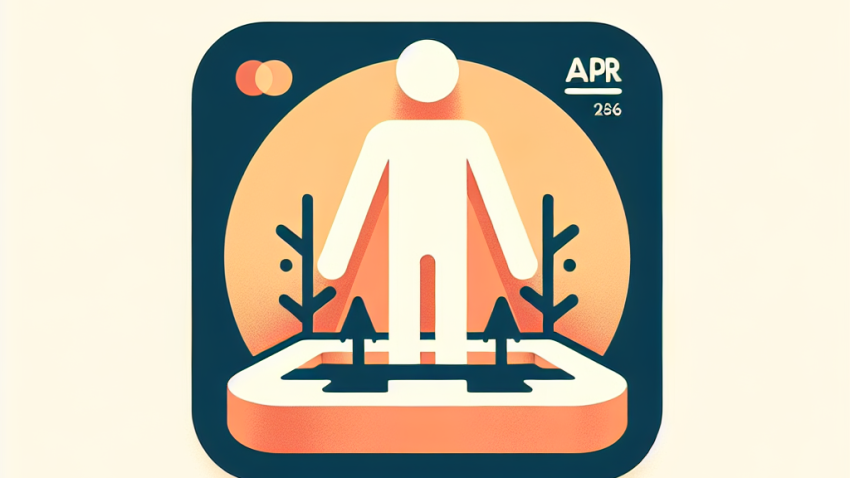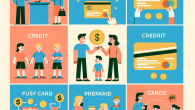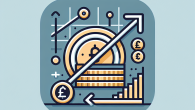
What Is APR and Why It Makes Credit Cards Feel Like a Trap
What Is a Budget & How to Create One That Actually Works
Let’s be honest. Budgeting isn’t the hottest topic at parties, and it doesn’t exactly keep you up at night with excitement. But here’s the truth, straight from your financial friend Tom: if you want to stop living paycheck to paycheck, start growing your savings, and finally feel in control of your money — budgeting is your new best friend. Don’t worry, we’ll keep things friendly, simple, and maybe even a little fun.
What Is a Budget?
A budget is simply a plan for your money. That’s it. It tells you how much money is coming in (your income) and where it’s going out (your expenses). Think of it as your money’s GPS — helping you reach your financial destinations without taking a detour to the Land of Overdraft Fees.
Contrary to popular belief, a budget isn’t a jail sentence for your spending. It’s a tool that gives you freedom — the freedom to spend with confidence, save for things you care about, and avoid the stress of “where did my money go?” at the end of every month.
Why You (Yes, You) Need a Budget
- It gives your money purpose: Instead of wondering where your cash disappears to, you tell it where to go ― rent, groceries, that sweet vacation in Bali.
- It helps you build savings: Whether you’re saving for an emergency fund or that dream laptop, a budget creates space for goals.
- It reduces financial stress: When every dollar has a job, surprises feel a whole lot less scary.
- It keeps you accountable: You’ll finally face those subscriptions you forgot about (lookin’ at you, Gym Membership 2019).
Step-by-Step: How to Create a Budget That Actually Works
Budgeting can be as intimidating as parallel parking on a hill, but I promise it doesn’t have to be. Here’s how to build a budget that sticks and works with real life (not just spreadsheets).
1. Calculate Your Monthly Income
This is your starting point — know how much cash is coming in. Include:
- Salary (after taxes)
- Freelance or side-gig income
- Tips, commissions, or bonuses
- Any regular government benefits, rental income, etc.
Always base your budget on *net income* — that’s what you actually take home, not your pre-tax salary. Otherwise, you’re budgeting Monopoly money.
2. Track (and List) Your Expenses
This is where the magic (or horror) starts. Look at your past 1-2 months of expenses via bank statements or budgeting apps. Break them into two categories:
Fixed Expenses (Same Every Month)
- Rent or mortgage
- Utilities (electricity, water, internet)
- Insurance
- Minimum loan payments
- Streaming subscriptions (Netflix, Spotify, etc.)
Variable Expenses (Fluctuate Month to Month)
- Groceries
- Transportation (gas, public transit)
- Dining out
- Clothing, gifts
- Entertainment and hobbies
Once you map these out, you’re on your way to financial clarity (and fewer surprise coffee binges).
3. Pick a Budgeting Method
There’s no one-size-fits-all budget. Choose one that matches your personality and goals. Here are three crowd-pleasers:
50/30/20 Rule
Simple and clean. Divide your after-tax income like this:
- 50% Needs (rent, groceries, bills)
- 30% Wants (takeout, hobbies, travel)
- 20% Savings & debt repayment
Zero-Based Budget
Every dollar has a job to do. Income minus Expenses = Zero. That doesn’t mean you’re broke; it means you’ve assigned your dollars wisely — even to savings.
Envelope System (Cash-based)
Great for the spender who loves visuals. Withdraw cash for categories and put them in envelopes — when the envelope’s empty, that spending category is done for the month. Digitally, apps like Goodbudget work similarly.
4. Adjust Your Budget Based on Real Life
Let’s face it, life doesn’t always care about your spreadsheet. You’ll forget birthdays, spend more on gas or randomly decide you’re a plant person. It’s okay. A good budget evolves. Revisit and revise your categories every month until it fits you like your favorite pair of jeans (you know, the stretchy ones).
5. Track Every Dollar
After you build the budget, don’t walk away. Keep track of what you’re spending weekly. There are great tools to help:
- Apps like YNAB (You Need A Budget), Mint, or EveryDollar
- A simple spreadsheet or notebook (old school but effective)
This step turns good intentions into real progress. You’ll start catching those sneaky purchases that quietly sabotage your goals. Starbucks, we’re looking at you.
Budgeting Mistakes to Avoid
Even dedicated money warriors like me have faced these traps. Here’s what to steer clear of:
- Being too strict: A budget built like a boot camp won’t last. Leave room for fun and flexibility or you’ll burn out fast.
- Forgetting irregular expenses: Like gifts, pet vet checks or quarterly bills. Create a “miscellaneous” or “sinking funds” category to stay ready.
- Not budgeting for savings: Pay yourself first. Treat savings like a bill — it’s non-negotiable.
- Giving up after one bad month: Progress over perfection. Fall, get back up, readjust.
The Final Word from Tom
I get it — budgeting can feel like a chore. But here’s the secret: it’s less about restriction and more about intentional spending. Give your dollars a mission. Control your money, so it doesn’t control you.
And hey, no budget is perfect. Expect mistakes, learn from them, and keep going. Your future self — the one chilling with a fat emergency fund and guilt-free spending money — will thank you.
Got questions or need a nudge? I’m always around. Reach out through our Contact Page or learn more About Us.
Now go ahead — take an hour, grab a coffee, and create your first budget. Your bank account will thank you later (probably with fewer overdraft alerts).
Stay smart, stay savvy, and don’t forget to leave room in your budget for tacos.









Leave a Reply